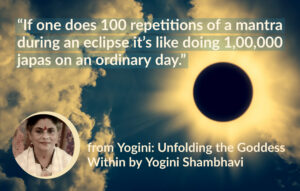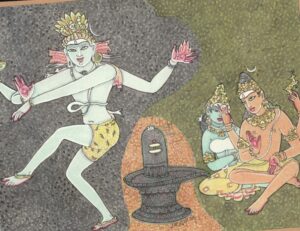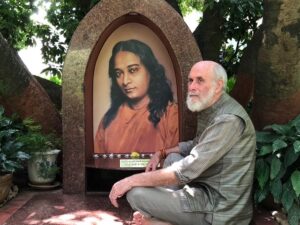Samadhi is one of the key words of deeper Yoga practice, if not the most important.
Yet few Yoga teachers or practitioners know what Samadhi is, how to define it or how to approach it. But without understanding Samadhi it is difficult to understand Yoga in the true sense of the term.
Samadhi literally means holding together or complete coherence (sam-aadhi), implying the mind fully united with its object of perception so that the mind disappears and merges into pure consciousness and bliss. It is the highest aspect of Yoga practice as complete meditative absorption that takes us beyond body and mind.
Samadhi in Yoga Sutras
The Yoga Sutras defines Yoga as Samadhi. Indeed, the first of the four sections of the text begins with Samadhi Pada, the section relating to Samadhi. Samadhi is the last and the highest of the eight limbs of Ashtanga Yoga, which all the others aim towards. It is the goal of Yoga practic as defined in the second section of the Yoga Sutras as Sadhana Pada. Samadhi, also called Samyama. It is the basis of the yogic powers and accomplishments that form the third section or Vibhuti Pada of the text. Finally, Samadhi in its fully developed or Nirvikalpa form, taking us beyond all thought, is the basis of Kaivalya or the natural state of the Purusha or inner Self that constitutes the fourth section and culmination of the Yoga Sutra teaching of Self-realization.
Samadhi, like many yogic terms, is difficult to translate because it has no equivalent or synonym in English or in any other western languages. It has been loosely and wrongly defined as some sort of trance, ascetic state, mystical experience, altered consciousness, or even psychological delusion. Samadhi is a state of direct awareness beyond all concepts, motivations and experiences of the mind, so it cannot be put into mere words, logic, information or theories, whether by modern science or modern medicine.
Samadhi follows in Yoga practice after Dhyana, which is generally translated as meditation. Samadhi is the ultimate focus and concentration of our awareness, which requires the dissolution of mental consciousness, ego or any attachment to physical reality and personal identity. It is best rendered as a state of absorption or unity consciousness, but is better left untranslated and defined in itself.
Higher and Lower Samadhis
Yet Samadhi is said to exist on all levels of the mind as well as beyond the mind, meaning that there are lower non-yogic Samadhis, as well as higher yogic Samadhis. At the most basic level, Samadhi of some sort occurs when the mind loses itself in something, and experiences some taste of happiness, bliss or Ananda. Common sensory experiences from watching a movie to contemplating a beautiful sunset involve a temporary absorption of the mind into its object of perception that are lesser or fleeing Samadhis. Sleep is our natural daily physical samadhi of peace and renewal but does not occur at a conscious level except in Yoga Nidra.
Indeed, seeking Samadhi as lasting unity and happiness is the very nature and motivation of the mind, which is empty and unhappy in itself. But ordinarily we seek active or outward-looking Samadhis that are transient in nature, based upon getting entranced in the illusory world of Maya. This is what we call the pursuit of enjoyment, happiness or achievement. When we reach our desire-based goal we gain a sense of fulfillment, happiness or accomplishment that form lower Samadhis, but quickly disappear and leave us with yet more unfulfilled desires. This pursuit of outer highs extends to computer games, drugs and many forms of disturbed behavior as well. The mind remains a problematical entity until we learn the yogic practice of Samadhi to resolve it altogether.
Only when we awaken inwardly to our eternal destiny as a reincarnating soul do we begin to seek the enduring inner Samadhis and not just outer pleasure, intoxication and enjoyment. We certainly should seek bliss or happiness in life, this is not the question, but we should do so inwardly where it can be found in an enduring manner. For that purpose, we must remove the ignorance that causes us to seek our happiness on the outside, where we cannot hold it, rather than within ourselves as the core of our being.
Reaching the Higher Samadhis
The higher or yogic Samadhis are born of turning within, inner calm, stillness, peace and silence, with the mind like mirror reflecting the reality of pure consciousness. They arise from detachment from outer names and forms, rather than identification outwardly. As such, the yogic Samadhis follow a radically different line of approach than the highs and enjoyment of the mind, which are but their shadow.
To appreciate these real Samadhis, we must change our view of ourselves and of the world. We are not a mere physical human person seeking happiness and security in the material world for the duration of our short mortal life. We are a Divine reincarnating soul or Jivatman, which contains the energy and consciousness of the entire universe deep within.
We must awaken our inner soul purpose that can take us to the highest Samadhi, if we embark on a dedicated and enduring Sadhana for Self-realization. The teachings and practices of Yoga and Vedanta guide us along this ultimate path to bliss, particularly the practice of Self-inquiry that takes beyond the mind. There are many aids to this including all aspects of Yoga, but ultimately we must develop an inner power of concentration, surrender and Self-knowledge in which we can transcend our out ego, its karmas and its attachments. For this there are no formulas other than deep meditation.
Yoga Sutras emphasizes developing a deep aspiration for Samadhi through Ishvara Pranidhana, surrender to the cosmic intelligence and transcendent Self behind the core of our being. It is int just a matter of effort or technique but will and motivation allied with the highest inner knowing.
Vamadeva







